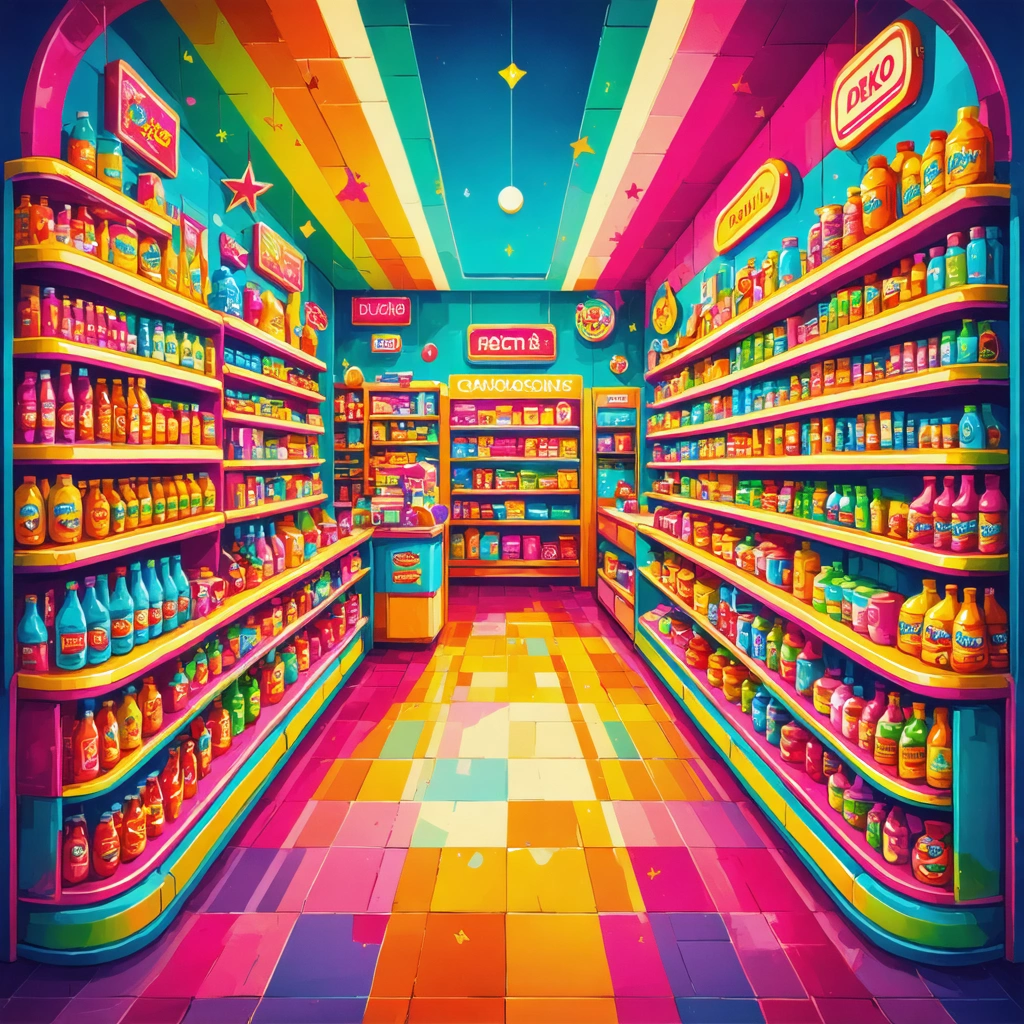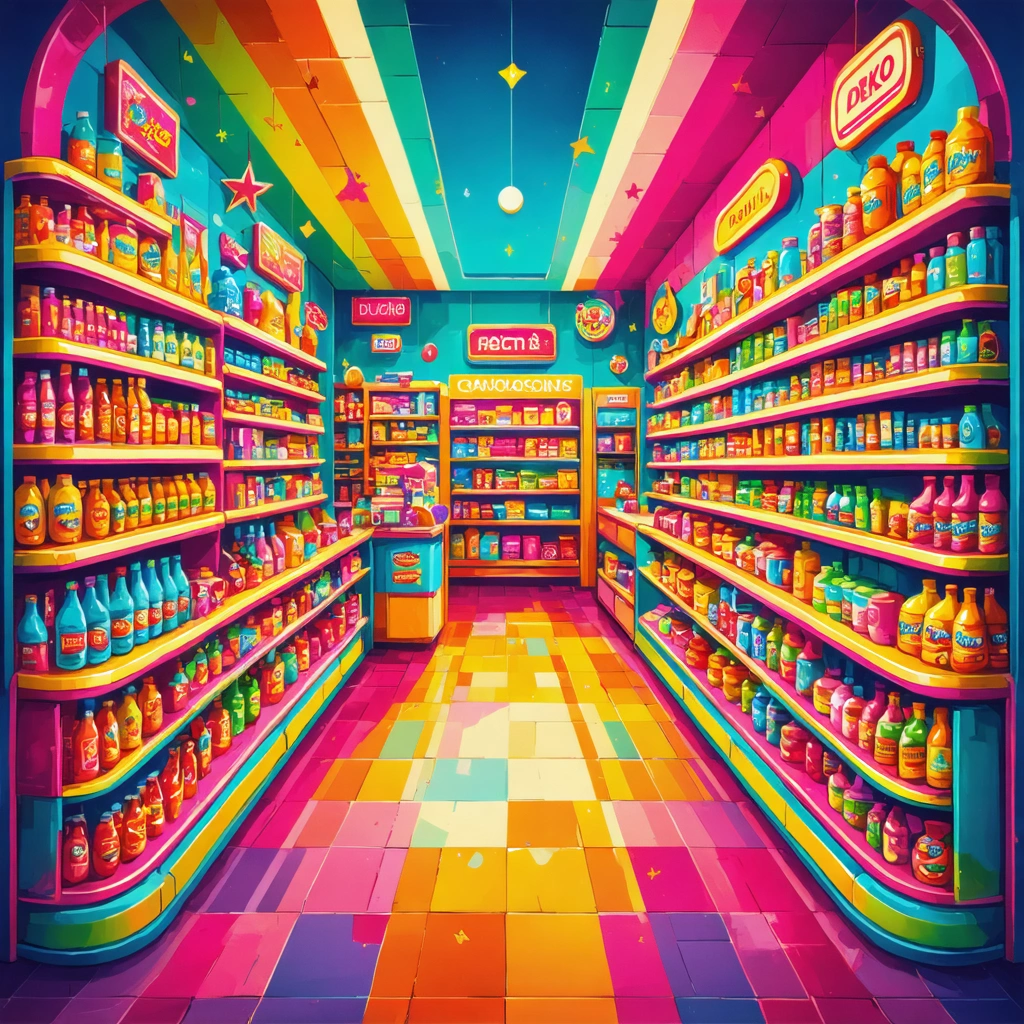How Brands Use Nostalgia to Win Hearts: Nostalgia-driven campaigns, from retro logos to 90s snacks, evoke powerful emotions.

Why Do We Keep Coming Back to the Past?
Have you ever caught yourself scrolling through social media and suddenly stopped at a post featuring an old cartoon character or a vintage candy wrapper? Maybe a retro logo from your favorite childhood brand sparked a flood of memories. It’s not just coincidence—brands have gotten remarkably good at tapping into our emotional vault of nostalgia. But what is it about these nostalgia products and nostalgic art that make them so irresistible? Why do marketers keep digging into the past to shape our present-day choices? The answer lies in the powerful connection between nostalgia and human emotion, a connection that has become a cornerstone of effective nostalgia marketing.
In a world saturated with flashy new trends and ever-evolving pop culture, consumers—especially millennials and Gen Z—often find comfort in the familiar. It’s a natural psychological response: revisiting those cherished moments from the past can create a sense of stability, happiness, and belonging in an otherwise chaotic modern landscape. But brands don’t just rely on nostalgia for warm fuzzies. They strategically craft campaigns that trigger nostalgic impressions, using everything from 90s candy revivals to retro logos that remind us of simpler times.
The Emotional Pull of Nostalgia Marketing: What’s Really Going On?
Imagine seeing a candy bar on the shelf, wrapped in packaging that looks like it came straight out of the 1990s. Instantly, you’re transported back to after-school snacks, cartoons on Saturday mornings, and carefree childhood summers. That experience isn’t accidental. Marketers leverage nostalgia marketing to create emotional resonance—this isn’t just about selling a product; it’s about rekindling feelings that consumers associate with positive experiences from their past.
But it goes deeper than just packaging. Nostalgic art, for instance, taps into visual cues that evoke a bygone era—think neon colors, pixelated graphics, or even old-school typography. When these elements reappear in advertising or product design, they don’t just remind us of the past; they make us feel part of an ongoing story. It’s a clever way brands maintain loyalty and foster emotional bonds that go beyond the transactional.
Still, there’s a fine line between genuine nostalgia and gimmickry. Not every throwback campaign strikes the right chord. Some risk alienating younger audiences who might not share the same nostalgic references. That’s why successful nostalgia marketing is an art form in itself, requiring a deep understanding of pop culture and consumer psychology.
What Will You Discover in This Article?
This article will journey through the fascinating ways brands master nostalgia-driven campaigns. We’ll explore how retro logos make a comeback to reignite brand love, why 90s candy is making a surprising resurgence, and how nostalgic art is used to craft compelling visual stories that resonate across generations. Along the way, you’ll see how nostalgia products are more than just relics—they’re powerful tools that shape consumer behavior and keep brands relevant in an ever-changing marketplace.
Whether you’re a marketer looking to harness the magic of nostalgia for your brand, a consumer curious about the psychology behind your favorite throwback ads, or simply someone who enjoys a good trip down memory lane, this post will offer fresh insights and practical examples. So buckle up—let’s unpack the emotional, cultural, and strategic layers behind nostalgia marketing and discover how brands win hearts by reaching back in time.

How Brands Use Nostalgia to Win Hearts: An In-Depth Look at Nostalgia-Driven Campaigns
Why Nostalgia Marketing Works: The Emotional Power Behind Nostalgic Impressions
Nostalgia marketing taps into consumers' fond memories of the past, evoking powerful emotions that can create a deep connection between a brand and its audience. When people see retro logos or 90s candy featured in campaigns, they often experience a warm, sentimental feeling—known as nostalgic impressions—that fosters trust and loyalty.
Psychological studies have shown that nostalgia can reduce stress, increase feelings of social connectedness, and boost optimism. Brands harnessing these emotional triggers through nostalgia marketing often see higher engagement rates, increased brand recall, and improved sales. For example, a survey by Nielsen found that 56% of consumers say they are more likely to buy a product if it reminds them of their childhood or past experiences.
Pop Culture as a Vehicle for Nostalgia
Pop culture is a rich source of nostalgic content, as it reflects shared experiences and cultural moments that resonate widely. Brands frequently incorporate elements from iconic TV shows, music, movies, or fashion trends to evoke nostalgia. This strategy makes their campaigns feel relevant and emotionally charged, even when appealing to younger audiences discovering these references for the first time.
For instance, the resurgence of shows like "Stranger Things" has inspired brands to revisit 80s and 90s aesthetics, leveraging retro logos and nostalgic art styles that recall the era. This connection to pop culture history enhances the authenticity of nostalgia-driven campaigns.
Retro Logos and Their Role in Nostalgia Marketing
One common tactic in nostalgia marketing is the revival of retro logos. By temporarily or permanently bringing back vintage branding elements, companies signal a return to their roots and tap into consumers’ memories of “simpler times.” This approach can also distinguish a brand in a crowded market by emphasizing heritage and longevity.
Examples include:
- Coca-Cola: The brand often employs its classic script logo during special campaigns to evoke nostalgia linked to family gatherings and holidays.
- Nike: Nike sometimes reissues vintage sneaker designs alongside retro logos, appealing to both collectors and new fans attracted by nostalgic impressions.
Reviving 90s Candy and Nostalgia Products to Trigger Childhood Memories
Products like 90s candy or other nostalgia products are especially effective because they engage multiple senses—taste, smell, and sight—all of which strongly tie into memory. Brands relaunching these items or creating campaigns around them create immediate emotional connections that go beyond rational buying decisions.
For example, the return of candies such as Dunkaroos or Ring Pops has sparked excitement among millennials and Gen Xers, who associate these treats with carefree childhood moments. This strategy not only revitalizes interest in the product but also encourages social sharing and word-of-mouth marketing.
Nostalgic Art and Visual Storytelling in Campaigns
Visual elements like nostalgic art styles—pixel art, neon colors, or hand-drawn illustrations reminiscent of past decades—can enhance the emotional effect of a campaign. These visuals often complement retro logos and nostalgic products, creating a cohesive brand story that feels authentic and inviting.
Brands that invest in high-quality nostalgic art tend to capture attention on social media, as users appreciate the artistic homage to eras they cherish. This also helps differentiate campaigns from generic advertising, making them memorable and shareable.
How to Implement Effective Nostalgia Marketing Campaigns
Brands looking to leverage nostalgia marketing should consider the following steps:
- Identify the target audience’s nostalgic triggers: Understand which eras, products, or pop culture references resonate most deeply with your customer base.
- Incorporate authentic retro elements: Use genuine retro logos, nostalgic art, and original product formulations to build credibility.
- Tell a compelling story: Connect the nostalgic elements to the brand’s current values and mission, ensuring relevance and emotional depth.
- Leverage multiple channels: Use social media, in-store displays, packaging, and digital advertising to create a unified nostalgic experience.
- Engage with user-generated content: Encourage customers to share their own nostalgic memories related to the brand or products to deepen community bonds.
Case Studies: Successful Nostalgia Marketing Campaigns
1. Pepsi’s Throwback Campaign
Pepsi reintroduced its classic 90s logo and packaging for a limited time, coinciding with a social media campaign encouraging fans to share memories from the decade. This generated a 25% increase in sales in the retro range and significant buzz online.
2. Hostess and 90s Candy Revival
Hostess capitalized on the resurgence of 90s snacks by re-releasing iconic products like Dunkaroos. The campaign targeted millennials on Instagram and TikTok, resulting in a viral trend and sold-out products within weeks.
Conclusion: The Enduring Appeal of Nostalgia in Branding
Nostalgia marketing, through the use of pop culture references, retro logos, 90s candy, nostalgic art, and nostalgia products, remains a powerful strategy for brands aiming to create emotional connections. By evoking nostalgic impressions, brands not only win hearts but also foster loyalty and differentiation in a competitive marketplace. Thoughtful, authentic, and well-executed nostalgia campaigns continue to captivate consumers across generations, proving that sometimes, looking back is the best way to move forward.




